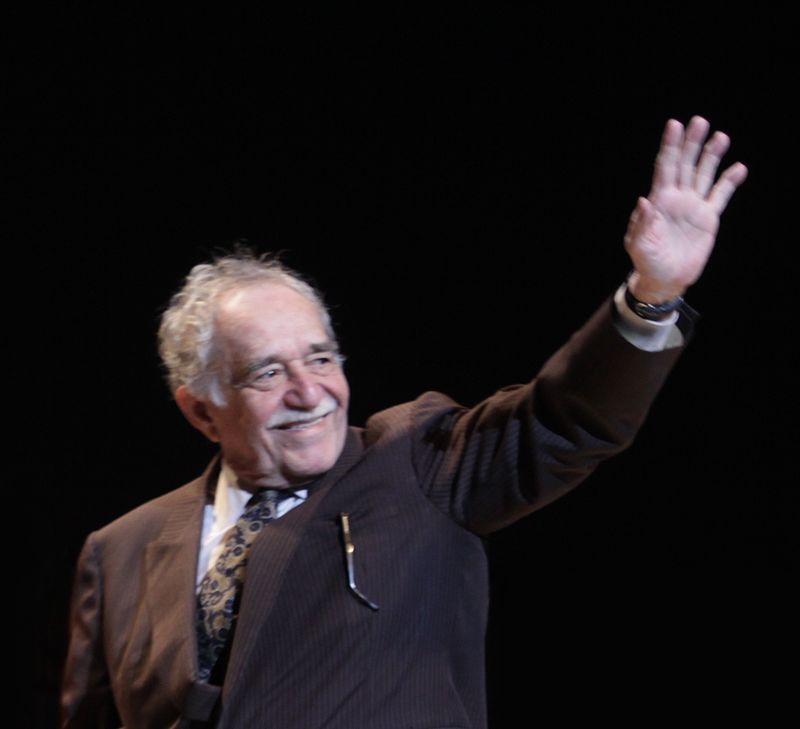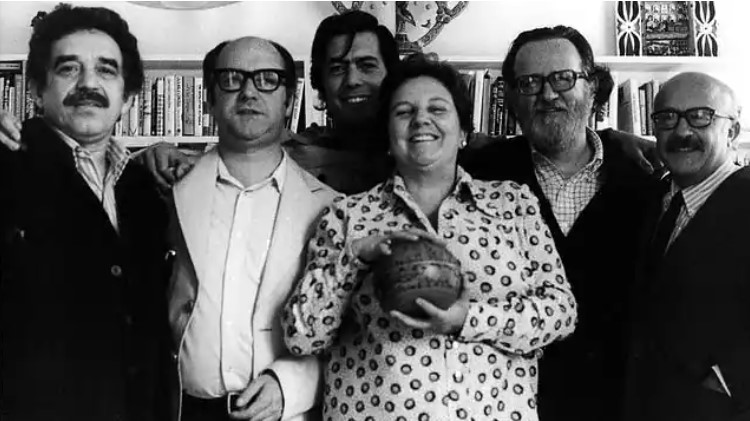
Today, March 6, marks the birthday of one of the most influential writers of the 20th century: Gabriel Garcia Marquez. Known affectionately as Gabo, Garcia Marquez not only captivated the world with his magical prose and magical realism, but also became a literary icon that transcended borders and generations.
In Colombia he is a source of national pride; he has the merit of being the first Colombian to receive the prestigious Nobel Prize, in the category of literature, something that only former President Juan Manuel Santos would achieve, recognized with the Nobel Peace Prize, after achieving the Havana Agreement with the extinct FARC, in 2016.
Garcia Marquez was able to represent the world of his native Caribbean in his works; a world halfway between fiction and reality that does not distinguish borders and that, with the help of the Spanish editor Carmen Balcells, took this Colombian magical realism to all corners of the planet.
A special childhood in Aracataca
Born in Aracataca, in the coastal department of Magdalena, Colombia, on March 6, 1927, Garcia Marquez was raised by his grandparents in a Caribbean environment rich in stories and superstitions. This childhood in the Colombian Caribbean left a very recognizable mark on his writing, infusing his works with a richness of detail and a sense of the magical that would characterize his distinctive style.
In that childhood world, which he masterfully recreates in his memoir “Live to tell the tale” (2002), he was always surrounded by women. Although Garcia Marquez studied law at the National University of Colombia in Bogota, his true passion was always writing. During his student years, he became involved in journalism and literature, working as a reporter and writing short stories that explored the complexities of the human condition.

“One Hundred Years of Solitude”, his masterpiece
It was in the 1960s that Garcia Marquez published his masterpiece, “One Hundred Years of Solitude” (1967). This novel, published in 1967, is a literary monument that tells the story of the Buendía family over several generations in the fictional town of Macondo. With dazzling magical realism, Garcia Marquez wove a tapestry of unforgettable characters and fantastic events that captivated readers around the world.
The publication of “One Hundred Years of Solitude” marked the beginning of Garcia Marquez’s international fame and established him as one of the most important writers of his time. The novel became a literary phenomenon and an obligatory reference in contemporary Latin American literature.

Macondo and magical places
Macondo, the mythical town created by Gabriel Garcia Marquez, has become an indisputable symbol of magical realism in Latin American literature. This imaginary enclave emerges from the brilliant pen of the Colombian author as the epicenter of the story in his masterpiece “One Hundred Years of Solitude”. Surrounded by exuberant nature, Macondo is a microcosm where the everyday is inevitably intertwined with the marvelous.
Magical realism, as a narrative aesthetic, gives Macondo an aura of mystery and enchantment that transcends the ordinary. Here, supernatural events coexist with the daily life of its inhabitants, creating a unique and unforgettable universe for the reader.
Throughout his career, Garcia Marquez imbued his works with the essence of Macondo. This imaginary town appears not only in “One Hundred Years of Solitude”, but also in other outstanding works such as “The Litter” (1987), “The Colonel Has No One Who Writes to Him” (1986) and “The Autumn of the Patriarch” (1975). In each of these narratives, Macondo stands as a symbol of Latin American identity, where magic and reality converge to unravel the mysteries of the human soul and of the continent itself. Thus, Macondo becomes an enduring literary legacy that transcends borders and generations.
Beyond Macondo
Throughout his prolific career, Garcia Marquez continued to produce masterful works that explored universal themes such as love, loneliness, politics and death. “Love in the Time of Cholera” (1985) and “Chronicle of a Death Foretold” (1981) are just two examples of his ability to capture the complexity of the human experience with poetic and evocative prose.
Garcia Marquez’s work not only left an indelible mark on world literature, but also influenced generations of writers and readers who were fascinated by his boundless imagination and his ability to weave captivating stories.
The “Latin American Boom”
The “Latin American Boom” was essentially an explosion of talent of Latin American authors who dazzled with their art in the 60’s and 70’s. This literary movement comprised a multitude of Latin American authors in addition to Garcia Marquez, among them the Argentine Julio Cortazar with “Rayuela”; the Mexican Carlos Fuentes, with “Aura” and the Peruvian Mario Vargas Llosa with “The City and the Dogs”. All of them were texts that dazzled with their narrative originality and their exploration of Latin American reality.
Behind the success of the “Boom” was Carmen Balcells, the influential literary agent who represented many of these writers. Balcells not only promoted their works internationally, but also provided support and guidance in their careers. Her bold vision and commitment to Latin American literature played a fundamental role in the recognition of the talent of those then young writers.

The first Colombian Nobel
In 1982, the Nobel Prize for Literature recognized the literary genius of Gabriel Garcia Marquez. The Swedish Academy praised his ability to fuse reality with the magical, awarding him the prestigious prize for his masterpiece “One Hundred Years of Solitude” and his profound contribution to world literature.
The Colombian writer received the most important recognition an author can receive for captivating readers around the world with his unique style and immersive storytelling. His ability to weave stories that explore the complexity of the human experience and the cultural richness of Latin America made him a literary icon.
The 1982 Nobel Prize in Literature celebrated not only Garcia Marquez’s brilliance as a writer, but also his ability to capture the essence of the human condition through his characters and stories. This award enshrined Garcia Marquez as a towering figure in the world of letters and reaffirmed the enduring impact of his literary legacy.
When he received the award, the writer was dressed in the traditional clothing of his homeland and it was the moment of greatest national pride for a country which, at the time, was beginning to plunge into the dark era of the drug cartels.
Mexican exile
One of the darkest points of Garcia Marquez’s life took place in 1981, when the brilliant writer had to emigrate to Mexico, fleeing from the doctrine of political repression carried out by the Colombian president of the time, Julio Cesar Turbay Ayala.
It was not the writer’s first exile. Already in 1957 he left for Venezuela, in the context of the last moments of the dictatorial regime of General Rojas Pinilla in Colombia. From there he would move in 1961 to Mexico, where he would settle for the first time as a press correspondent, after receiving threats from Cuban dissidents, and where he would write his masterpiece: “Cien años de Soledad” (One Hundred Years of Solitude).
However, the path taken at the beginning of the 80’s was definitive: Garcia Marquez would never return to live in Colombia. Being falsely accused of having links with the M-19 guerrillas, police persecution and the possibility of being arrested and tortured under the so-called Security Statute, President Turbay’s regime of democratic restrictions, forced the writer into his second Mexican exile.
Beyond his political sympathies and his controversial friendship with Fidel Castro, the figure of Gabriel Garcia Marquez was always uncomfortable for the Latin American ruling class because he put a spotlight on the miseries of countries built on social exclusion. The acid and scathing criticism of the Colombian genius, which he maintained throughout his life both as a journalist and as a writer, died with him in Mexico on April 17, 2014.

See all the latest news from Colombia and the world at ColombiaOne.com. Contact our newsroom to report an update or send your story, photos and videos. Follow Colombia One on Google News, Facebook, Instagram, and subscribe here to our newsletter.

